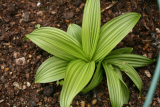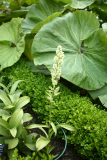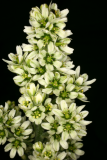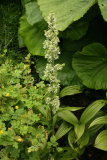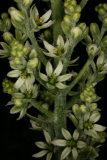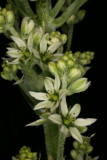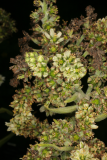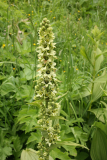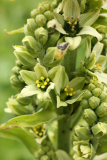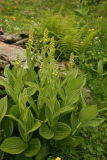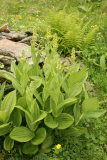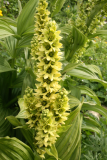Additional notes (click to expand)
Medicinal
POM veratrine
Nomenclature
Spelling error- Melianthaceae AT 29/01/2021
Other use
Veratrum album L. Melanthiaceae Distribution: Europe. Cows do not eat Veratrum species in the meadows, and human poisoning with it caused vomiting and fainting. In the 1850s it was found to reduce the heart's action and slow the pulse (Bentley, 1861, called it an 'arterial sedative'), and in 1859 it was used orally in a woman who was having convulsions due to eclampsia. Dr Paul DeLacy Baker in Alabama treated her with drops of a tincture of V. viride. She recovered. It was used thereafter, as the first choice of treatment, and when blood pressure monitoring became possible, it was discovered that it worked by reducing the high blood pressure that occurs in eclampsia. By 1947 death rates were reduced from 30% to 5% by its use at the Boston Lying in Hospital. It works by dilating the arteries in muscles and in the gastrointestinal circulation. A further use of Veratrum species came to light when it was noted that V. californicum -and other species - if eaten by sheep resulted in foetal malformations, in particular only having one eye. The chemical in the plant that was responsible, cyclopamine, was found to act on certain genetic pathways responsible for stem cell division in the regulation of the development of bilateral symmetry in the embryo/foetus. Synthetic analogues have been developed which act on what have come to be called the 'hedgehog signalling pathways' in stem cell division, and these 'Hedgehog inhibitors' are being introduced into medicine for the treatment of various cancers like chondrosarcoma, myelofibrosis, and advanced basal cell carcinoma. The drugs are saridegib, erismodegib and vismodegib. All the early herbals report on its ability to cause vomiting. As a herbal medicine it is Prescription Only, via a registered dentist or physician (UK Medicines and Healthcare Products Regulatory Agency (MHRA)).
Oakeley, Dr. Henry F. (2013). Wellcome Library notes.
link
Phytochemistry
Active principle: all parts: protoveratrine A and B, germerine, cyclopamine
Wink, M. (2009). Mode of Action and toxicology of plant toxins and poisonous plants. Mitt. Julius Kuhn-Inst. 421:93-111. page 98
Toxicity
Class 1a: Extremely hazardous: alkaloids activate Na+-channels, cyclopamine causes malformation
(cyclopian eye), hallucinogenic, heart and neurotoxin, death by respiratory and cardiac arrest, skin irritant
Wink, M. (2009). Mode of Action and toxicology of plant toxins and poisonous plants. Mitt. Julius Kuhn-Inst. 421:93-111.
Toxicity due to veratrine and other alkaloids.
Professor Anthony Dayan, 2021
Veratrum album L.
Family: MELANTHIACEAEGenus: Veratrum
Species: album L.
Pharmacopoeia Londinensis name: Elleborus Albus
Distribution summary: Europe, N Africa, N Asia
Habit: Perennial
Garden status: Currently grown
Garden location: Pharmacopoeia Londinensis 1618 'Roots' (HSE 2)
Reason for growing: Medicinal, other use, toxic, prescription only medicine
